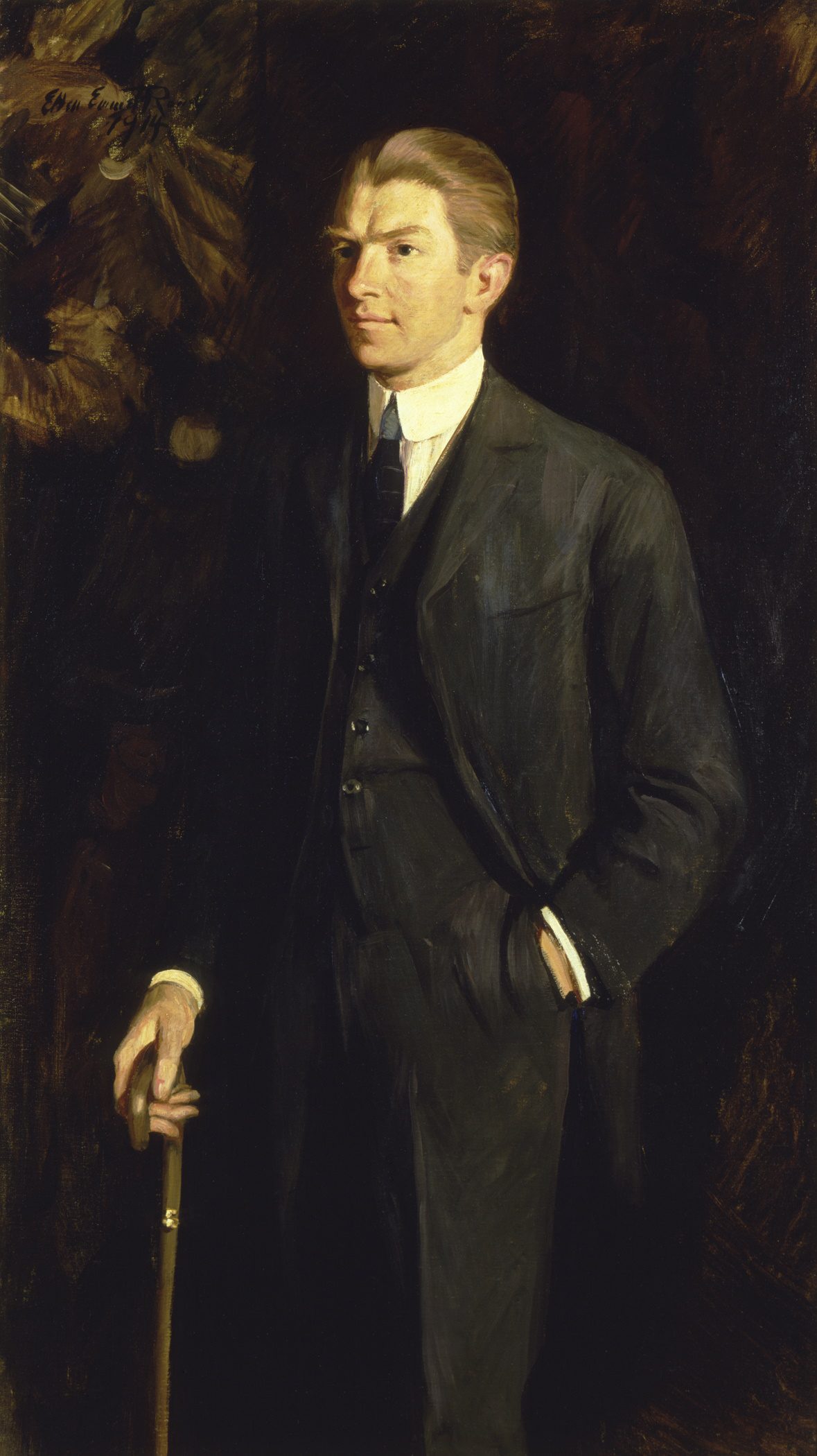
Image Caption: Portrait of Henry Francis du Pont by Ellen Emmet Rand, 1914
Henry Francis du Pont (1880–1969) was born at Winterthur and, in his words, “always loved everything connected with it.” A member of Delaware’s industrialist du Pont family, he studied at Bussey Institution, Harvard’s college of practical agriculture and horticulture, then spent the rest of his life managing the estate and its farm, perfecting his gardens, amassing one of the most significant collections of historic and decorative objects in the world, and, finally, creating a museum.
Gardener and Farm Manager
In1906, du Pont assumed responsibility for supervising the Winterthur Garden from his father. Du Pont developed and improved the formal garden areas near the house and created the March Bank, the first area of the garden with a naturalistic design. In the years before World War I, he traveled extensively to study the great gardens of Europe.
Du Pont took over management of the entire estate in 1914, developing Winterthur’s farmland and raising a prize-winning herd of Holstein-Friesian cows. By 1925, Winterthur encompassed turkey, chicken, sheep, hog, and dairy farms, as well as vegetable and flower gardens, greenhouses, a sawmill, a railroad station, and a post office. At Winterthur’s height, the property exceeded 2,500 acres. More than 250 workers tended the property and livestock. In addition to managing the farms, du Pont continued designing new areas and perfecting the Winterthur garden throughout his life.
Collector and Museum Founder
Until his death in 1969, du Pont divided his time among other homes in Southampton, Long Island; Boca Grande, Florida; and New York City. It was Winterthur, however, that he called home—the place where he lived with his wife, Ruth, and two daughters—and it became the center of his work.
In the 1920s he developed a passion for collecting historic American furniture, art, and decorative objects. To accommodate his burgeoning collection, du Pont greatly enlarged Winterthur and installed architectural elements from other early-American houses. For more than 20 years, the du Pont family often lived with the sounds of construction as their home was transformed.
Winterthur Museum opened in 1951. In 1961, at the invitation of Jacqueline Kennedy, du Pont led the First Lady’s Fine Arts Committee, which oversaw restoration of the White House. Fully recognizing the significance of the stories of art, craft, design, and history that his own collection could tell, du Pont also established graduate programs for the study of material culture and art conservation.
Today the museum, garden, graduate study programs, and a library that is recognized as a research center for material culture, are a legacy that provides constant beauty and insights into America past and present.